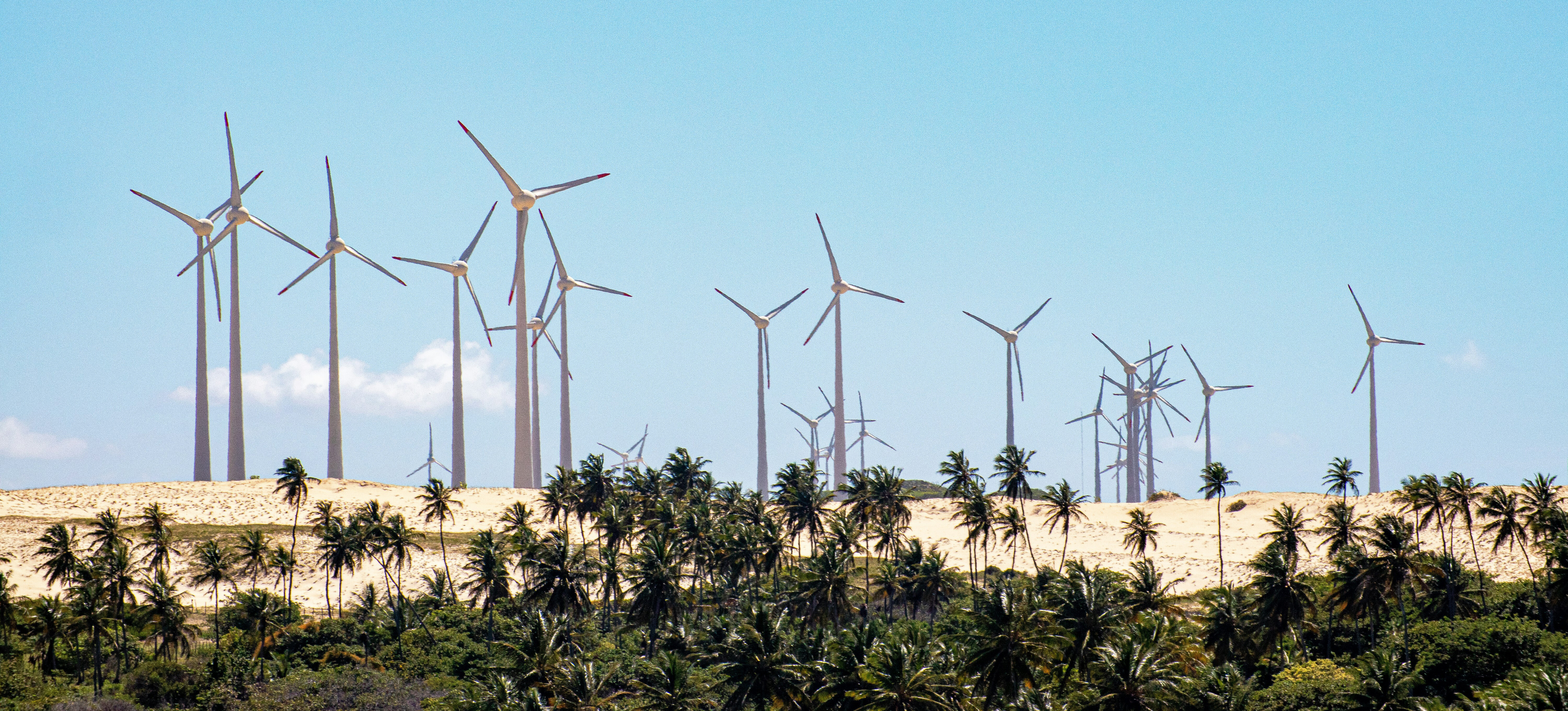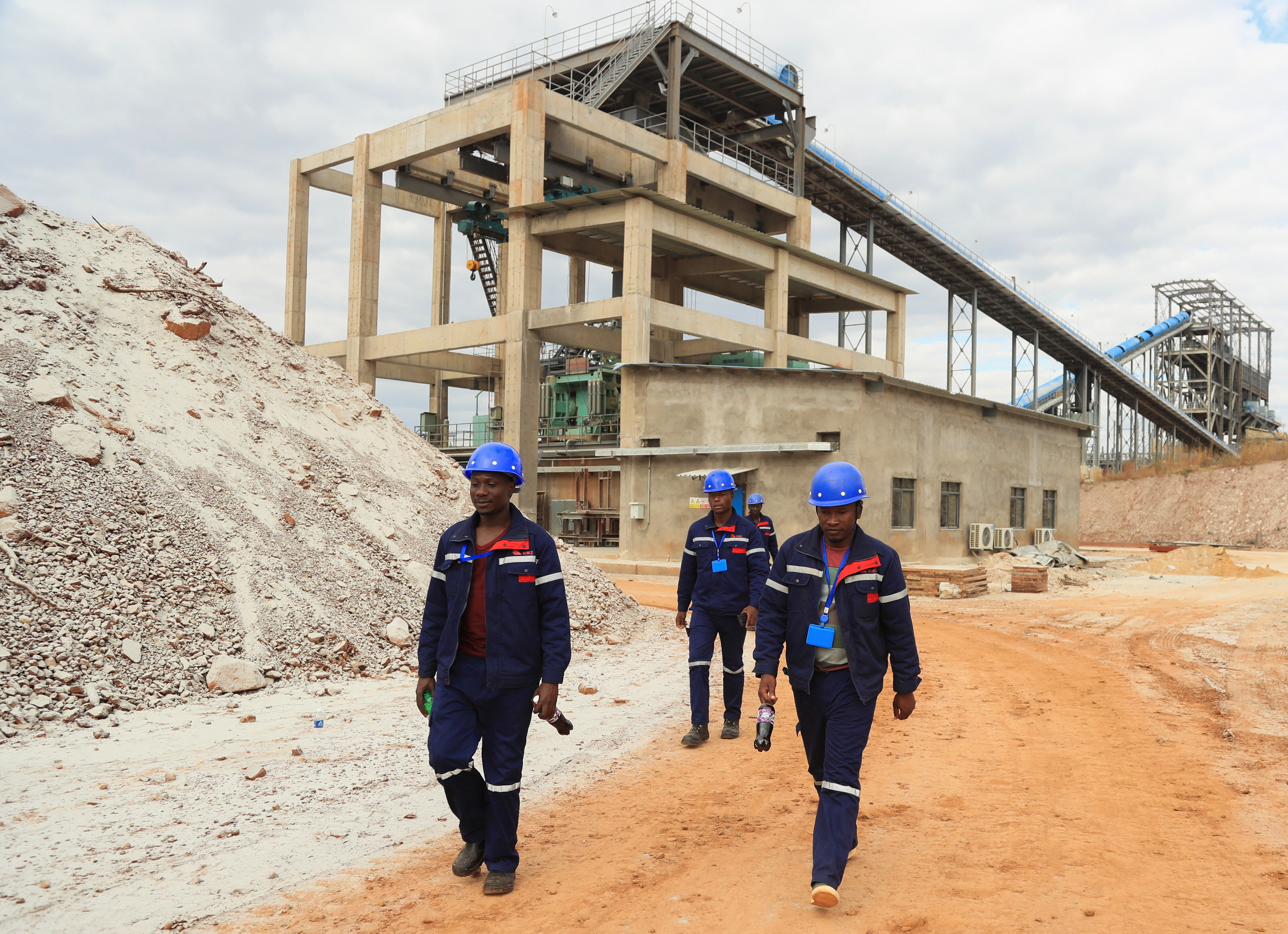3 charts that show how trade can speed up climate action and the transition to clean energy
The World Trade Organization’s annual report says trade barriers are holding back the use of low-carbon technologies needed to tackle climate change.
Image: Unsplash/publicpowerorg
Stay up to date:
Energy Transition
Listen to the article
- The World Trade Organization’s annual report says trade barriers are holding back the use of low-carbon technologies needed to tackle climate change.
- It says those developing countries that are more open to trade will have a greater capacity to adapt to the impacts of climate change.
- However, the global watchdog also says that more needs to be done to reduce emissions from shipping which is the main mode of trade transport.
“Trade can play a central role in driving progress towards a low-carbon global economy. But harnessing the potential of trade will demand new policies and more cooperation.”
The introduction to the World Trade Organization’s (WTO) annual report argues that trade can play a significant part in driving the green transition to combat climate change. Released at the start of the COP27 climate summit in Egypt, the WTO’s World Trade Report 2022 says obstacles to the acceleration of renewable technologies must be removed.
“The WTO has an opportunity to use the present moment to strengthen its role as a forum for coordination on trade and climate change, to address trade policy barriers holding back the dissemination and use of low-carbon technologies, and to support structural changes needed to decarbonize the global economy. I hope we will make the most of this opportunity,” said WTO Director-General, Dr Ngozi Okonjo-Iweala.
Climate change is already affecting the global economy
The report says that an increase in global temperatures, rising sea levels, as well as more frequent and intense weather events poses a significant threat to future prosperity. Climate change brings the prospect of productivity losses, shortages and supply disruptions and damage to transport infrastructure. It says developing countries and least-developed countries (LDCs) will suffer the most, as they have greater exposure to climate risks and have less capacity to adapt to global warming.
The WTO says if global greenhouse gas emissions aren’t significantly reduced, many countries are likely to find their ‘comparative advantages’ changing. These could include agriculture, tourism and some manufacturing sectors, like food-processing, which are particularly vulnerable to climate change.
However, the organization does accept that trade has historically been part of the problem as it has helped to drive carbon-intensive growth. It says that almost a third of the world’s total CO2 emissions were produced by global goods and services exports in 2018.
Trade can help countries facing climate disruption
Although climate impacts will remain disruptive and costly, the report says trade can help countries prepare and better respond: “by fostering higher economic growth, trade can generate additional financial resources to invest in adaptation strategies such as climate-resilient infrastructure”.
Access to pro-adaptation technologies and essential goods and services like food and healthcare products can also help more vulnerable economies, especially in crisis situations, according to the report. It adds that trade can also expedite the import of food if long-term shifts in weather patterns affect crop production. The WTO says overall, those countries which are more open to trade tend to be better at adapting to the impacts of climate change.
Trade can speed up the transition to a low-carbon economy
Despite acknowledging that trade itself produces inevitable emissions, the WTO says it also contributes to reducing them. It does this by “enabling access to cutting-edge climate technologies; incentivizing innovation in low-carbon technologies by expanding market size; and fostering competition and scale economies that help drive down costs.”
The organization also argues that resorting to limiting imports in favour of producing and consuming goods and services locally would be counterproductive and cause a fall in living standards. “Instead of re-shoring, the low-carbon transition would be better supported – and accelerated – by cleaner trade, which would involve reducing the carbon intensity of production, transportation and GVCs (global value chains), developing and deploying climate-friendly technologies and promoting trade in climate-friendly goods and services.”
The WTO says that trade and value chains have been significant factors in the “dramatic” fall in the cost of generating wind and solar energy. It says the cost of solar electricity has gone down by 97% since 1990, partly due to global value chains which have lowered costs by locating different production stages in different countries.
However, the WTO says more can be done in this area. It says “WTO simulations suggest that eliminating tariffs and reducing non-tariff measures on a subset of energy-related environmental goods could boost exports by 5% by 2030, while the resulting increases in energy efficiency and renewable uptake would reduce global emissions by 0.6%”.
Green job creation would increase in the low-carbon transition fuelled by trade. The report points to one estimate which suggests that as many as 30 million new jobs could be created in clean energy and related sectors by 2030.
Accept our marketing cookies to access this content.
These cookies are currently disabled in your browser.
International cooperation is vital
The WTO says tackling climate change requires international trade cooperation “on all fronts”. It says as governments accelerate climate action, “there is a risk that unilateral measures aiming to prevent carbon leakage and the loss of competitiveness of domestic industry could stoke trade tensions, create investment discouraging uncertainty, and impose disproportionate costs on firms and governments in developing countries”.
The report argues that more international cooperation on trade-related aspects of climate policy would reduce the risks. It says the WTO could play a more valuable role in coordinating and ensuring transparency in areas such as carbon-pricing and decarbonization standards.
Initiatives such as Aid for Trade, as well as trade-orientated private investment, can help developing and least-developed countries build climate-resilient trade infrastructure to make the green transition fairer. The WTO says from 2013 to 2020, Aid for Trade disbursements related to climate action amounted to $96 billion. It says a larger share of the funds was targeted at climate mitigation.

Accelerating the decarbonization of shipping
The WTO does point out in its report that international shipping is responsible for around 3% of global carbon emissions, as the main mode of trade transport. It says it supports the International Maritime Organization’s GHG Strategy which aims to reduce emissions from shipping by at least 50% by 2050.
This strategy is supported by the Getting to Zero Coalition which is a partnership between the Global Maritime Forum, Friends of Ocean Action and the World Economic Forum. The Coalition has recently raised its ambition to fully decarbonize the sector by 2050, keeping in line with science-based climate targets.
How is the World Economic Forum facilitating the transition to clean energy?
Don't miss any update on this topic
Create a free account and access your personalized content collection with our latest publications and analyses.
License and Republishing
World Economic Forum articles may be republished in accordance with the Creative Commons Attribution-NonCommercial-NoDerivatives 4.0 International Public License, and in accordance with our Terms of Use.
The views expressed in this article are those of the author alone and not the World Economic Forum.
Forum Stories newsletter
Bringing you weekly curated insights and analysis on the global issues that matter.
More on Energy TransitionSee all
Network of the Global Future Councils and Kaiser Kuo
November 4, 2025
Esther Finidori and Lisa Wee
November 4, 2025
Ezgi Canpolat and Varalakshmi Vemuru
November 3, 2025
Ayla Majid
October 30, 2025
Camille Canivet and Giorgio Parolini
October 29, 2025






